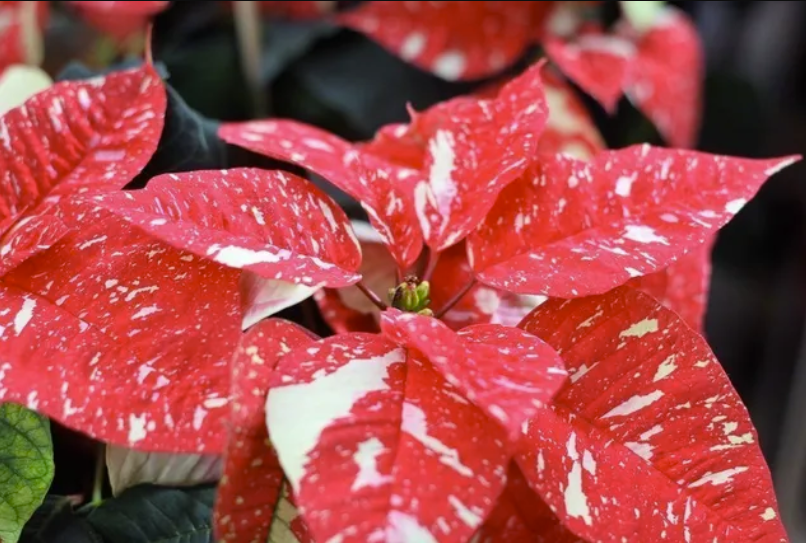Are you caring for your poinsettias correctly?

The poinsettia is the not only the most common Christmas plant in America, it is also the most popular potted flower in the United States. The poinsettia (Euphorbia pulcherrima) is native to southern Mexico and is named after Joel Poinsett, the first US Ambassador to Mexico who introduced the plant to the US in 1825. Today, the plant is so popular that it would be difficult to find a home or business that doesn’t have at least one of these holiday beauties on display during the holiday season.
But selecting the perfect poinsettia for your holiday décor and caring for this somewhat finicky plant during the holiday season and beyond can be tricky. Here’s what you need to know about selecting and caring for your poinsettia.
Selecting the perfect poinsettia
Poinsettias can be found in many shades of red, pink, white, rust and even a soft peach color. Variegated varieties of poinsettias with speckled foliage are also available. Whatever color poinsettia you choose, be sure to select a plant with large, brightly colored bracts, which is what the colored showy petal-like leaves are called.
The actual flowers are the small yellow blossoms which are surrounded by the bracts. Be sure to select plants that are not wilted, broken, or damaged, and have dark green leaves all the way down to the base of the plant.
Avoid selecting plants with flowers that are fully open, actively shedding pollen, or falling off, as the colored bracts do not last long after the flowers fade. Look for flowers that are tightly clustered and not yet completely open.
Gardening:Christmas cactus often confused with its Thanksgiving kin - learn the difference
Caring for your poinsettia during the holidays
Poinsettias are very sensitive to cold temperatures and drafts, so if the outdoor temperature is below 40 degrees when you purchase your poinsettia, be sure that it is in a protective plastic sleeve or large plastic bag to protect it from cold and wind when transporting it home.
Place your poinsettia in a sunny location away from drafts and cool windows. Do not place poinsettias on top of appliances or close to working fireplaces or wood-burning stoves, regardless of how cozy they may look sitting next to the fireplace!
Water poinsettias when the soil is dry to the touch, usually about once a week. Don’t leave poinsettia pots in a saucer filled with water as this can lead to wilt and eventually root rots. Poinsettias do not require fertilization while they are in bloom.

After the holidays
Poinsettias are lovely holiday plants, but they require a lot of work to re-bloom the following year. So don't feel guilty about composting them after the holidays. Do feel guilty about putting them in the garbage - please 'recycle' them instead.
Gardening:Make your home decor merry and bright by adding some holiday flowers
Although poinsettias are difficult to re-bloom, you may find it rewarding to keep them throughout the year and force them to bloom for the holidays next year. To re-bloom a poinsettia, cut it back to 4” to 8” above the soil in late March. Water regularly and fertilize every two to three weeks with a houseplant fertilizer with a 10-10-10 formulation.
When outdoor nighttime temperatures reach 55 degrees in the spring, poinsettias can be placed outdoors. Prune the plant in June and July in order to keep it dense and bushy. Don’t trim the plant after September 1. When temperatures begin to get cooler in late September, bring the plant back indoors.
Beginning on October 1, the plant must be placed in a completely dark room for 12 to 14 hours each day. You may put the poinsettia in a closet, in a dark room, or cover it with a box. During the day, put the poinsettia in bright sunshine. The poinsettia needs a long night and a short day in order to develop colored bracts. In early to mid-December the bracts will develop color and you should have a colorful poinsettia for the holiday season.
It is difficult to imagine celebrating Christmas without this festive plant among our most cherished decorations.
Mike Hogan is an Extension Educator, Agriculture and Natural Resources, and associate professor with Ohio State University Extension.
This article originally appeared on The Columbus Dispatch: How to select and care for poinsettias during the holidays

